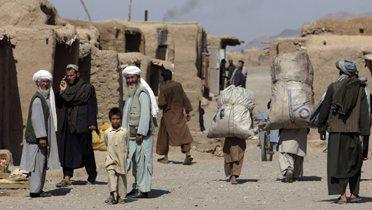Conflicts force people to leave their homes. Indeed, one of the measures of the severity of a conflict – in addition to casualties and duration – is the extent to which people have been displaced from their communities. In a recent survey by the International Committee of the Red Cross (ICRC) of 8 conflict-affected countries, 56 percent of people affected by conflict had been displaced and in some conflicts the percentages were far higher, nearly 80 percent in Afghanistan and nearly 90 percent in Liberia. In fact when people living in countries with conflict were asked about their greatest fears, fear of displacement was among their top three concerns – after losing a loved one and economic hardship – but above death, physical injury and sexual and gender-based violence.
As Table 1 indicates (see PDF), poor conflict-affected countries tend to have large numbers of internally displaced persons (IDPs) and, in at least some cases, large numbers of refugees. But the figures should be treated with caution; in some cases, such as Angola and Sierra Leone, governments simply decided that there are no longer IDPs, even if in fact many of those displaced by the conflicts have yet to find durable solutions. It is important to note that displacement is not confined to poor conflictaffected states, but it is also a characteristic of some middle income countries, some of which have stable governments, such as Georgia, Colombia, Azerbaijan, Syria and Turkey. In fact, less than half of the countries with either significant IDP or refugee populations are low-income. Of the twenty countries with significant IDP populations only nine were considered low-income by the World Bank in 2008. Similarly, only seven of the top twenty countries with refugee populations outside their borders were listed as low-income.
Additionally, a focus on displacement casts the net further afield than the conflict-affected countries listed in UNESCO’s 2010 GMR, which are all in Africa and Asia. The list of countries with significant numbers of internally displaced persons includes protracted displacement situations in Latin America, the Middle East, and Europe. The list of countries from which refugees flee from a well-founded fear of persecution also underscores the diversity of countries experiencing some form of conflict. For example, India and China, often referred to as emerging global powers in the international media, rarely have their on-going, low-level conflicts discussed, although the impacts are certainly very serious for the individuals and communities affected.





